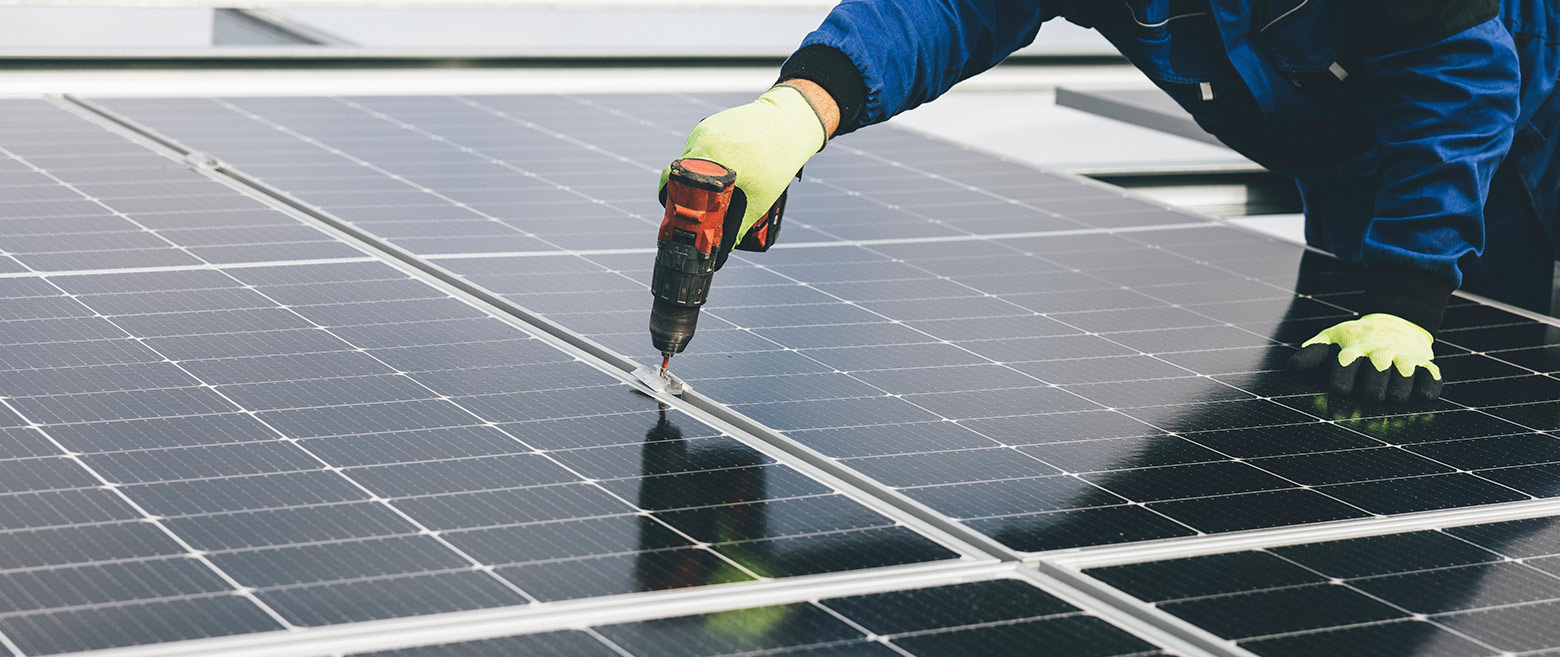Investing through the energy transition
Morgan Stanley Wealth Management
02/09/23Summary: Increasing demand and significant cost reductions have changed the clean energy landscape. Learn how decarbonization efforts may present long-term opportunities for investors.

The signs of growing interest in clean energy are easy to spot: solar panels line rooftops, wind turbines dot open plains, and electric cars cruise highways.
Less apparent, but equally important, are the economics at the center of the transition: The costs to produce wind and solar energy have dropped markedly in the past decade, and demand has increased as electric utilities begin to phase out fossil fuels.
While the world has a long road ahead to achieve net-zero carbon emissions by 2050 and meet the goals laid out in the Paris Agreement, Morgan Stanley strategists believe there may be significant long-term investment opportunities related to decarbonization efforts. Here’s how the energy transition is likely to play out over time and how investors can position portfolios for the global shift toward renewable and clean energy.
The shift toward renewables is accelerating
Innovation in the energy sector is nothing new—energy consumption has changed throughout history. Most recently in the US that’s been demonstrated as renewable sources such as wind, solar, geothermal, and hydropower have grown their shares of the pie. The Energy Information Administration (EIA) forecasts renewable energy consumption in the US could grow six percentage points by 2050—notably while shares of other sources decline or remain largely stable.1
Share of renewable energy consumption forecast to grow by 2050

Source: U.S. EIA, Morgan Stanley Wealth Management Global Investment Office as of March 3, 2022.
Wind and solar energy are quickly gaining ground
Over the last decade, costs have dropped precipitously for the two fastest-growing types of renewable energy—solar and wind—increasingly making them competitive alternatives to traditional sources.
Solar power, for example, is gaining significant ground in two notable areas: rooftop solar panels for residential homes, and solar farms built by electric utilities to replace coal-powered plants. Increased demand for solar products has fueled competition in the industry, driving costs down. In fact, solar electricity generation costs have decreased 83% since 2010.2
Interestingly, wind-generated electricity costs have fallen by a similar amount—85%—assisted by a deceptively simple innovation: longer blades.2 In recent years, developers have successfully added longer rotor blades to both onshore and offshore wind turbines, allowing for increased energy output.
Balancing carbon transition and energy security
Despite improving economics, clean energy still has a long way to go before it reaches the scale needed to support global demand.
Russia’s invasion of Ukraine placed a renewed emphasis on energy security, prompting governments to prioritize immediate energy needs and secure supplies. Ultimately, in the near to intermediate term, this may spur demand for oil and gas and encourage producers to invest in infrastructure.
That doesn’t have to come at the expense of investment in renewables in the longer term, however. The passage of the Inflation Reduction Act in August 2022, for example, represents the single biggest climate investment in US history, with financial support for a variety of clean energy technologies.
In short, the notions of energy security and decarbonization are not mutually exclusive; energy security and the energy transition—and related investment opportunities—can be pursued in parallel.
Opportunities in decarbonization
Many believe climate change will be the defining issue of our time, and, so far, while government initiatives, policy, and regulation have driven progress, going forward, the pace and success of decarbonization may increasingly depend on the private sector. With more companies pledging to address climate risk, investment opportunities around decarbonization have grown.
These opportunities aren’t just limited to the energy sector, either—to varying degrees almost all industries globally likely will be affected. Consider looking across the energy supply and production landscape, for example:
- Pure-play clean tech companies directly involved in renewable energy technology or production.
- Electric utilities that are transitioning away from fossil fuels and toward cleaner generation.
- Oil and gas companies that are investing in cleaner production, either through carbon capture or by diversifying production through renewables.
While Morgan Stanley Wealth Management strategists see strong growth potential for opportunities in renewables, investing in the space is not without risk. Growth for the sector assumes technological advancement, large-scale private investment, and continued policy support from governments around the world. As always, investors should make sure that decisions reflect individual goals, timelines, and risk tolerance.
- Morgan Stanley Wealth Management AlphaCurrents, US Energy: US Energy: Domestic Opportunities Amid Foreign Crisis, March 17, 2022.
- Morgan Stanley Wealth Management AlphaCurrents, Future of Energy—Investing in Decarbonization, July 29, 2021